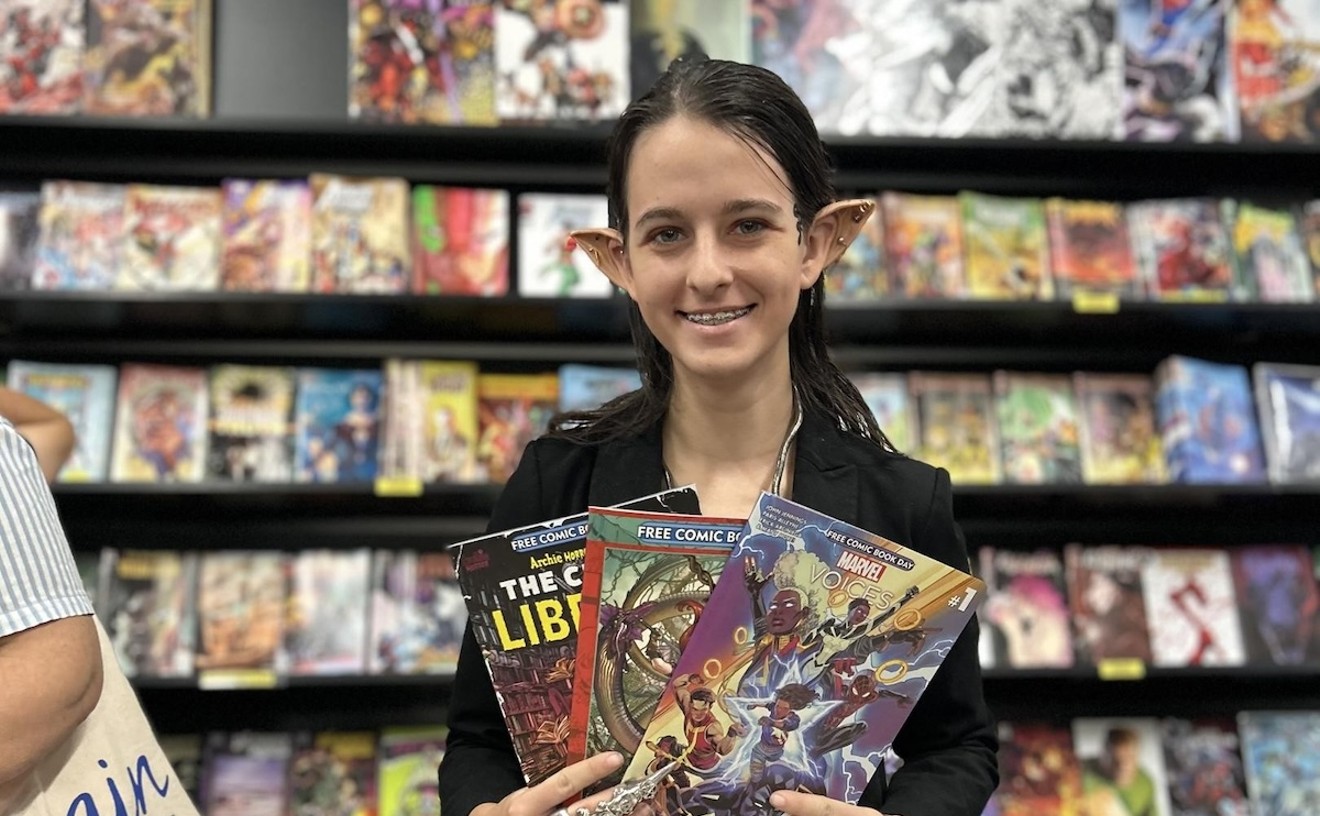There is a foul, slipshod odor emanating from the Cintas Foundation exhibit at the Frost Art Museum.
The show features the work of Alexandre Arrechea, María Martínez-Cañas, Gean Moreno, Wilfredo Prieto, and Leyden Rodriguez-Casanova, the five finalists for the $15,000 Cintas visual arts fellowship for 2007.
The foundation was established in 1963 with funds from the estate of Oscar B. Cintas, a Cuban sugar and railroad baron who was an art patron and once served as the island's ambassador to the United States. The organization has granted more than 300 fellowships to writers, architects, composers, visual artists, and filmmakers of Cuban descent living outside Cuba.
Some have gone on to earn the Pulitzer Prize, the OBIE Award, and the MacArthur "genius grant." The late Félix González-Torres, a former Cintas visual arts fellow, is representing the States at this year's Venice Biennale.
The current exhibition seems to be one of the squirreliest in years. In all fairness, responsibility for many of the glitches distracting from the works falls squarely on the shoulders of the Frost.
On the day I visited the museum, Prieto's scrappy installation, Mute — presumably intended to evoke a down-at-the-heels backwater juke joint, sans sounds — was down for the count. When I entered the tiny, curtained-off, black-painted space, after a sign warned that doing so could be "hazardous to one's health," nothing happened. I walked around like a dupe, touching the walls to see if a motion sensor would trigger the piece. Eventually a museum spokesperson rescued me, explaining, "We have been having technical difficulties with the piece for several days." She went on to describe that when it's functioning, "a mirrored disco ball and multicolored lights flash nonstop." I later observed several other saps cluelessly stumbling around Prieto's unplugged purgatory. How cruel.
Another artist who gets chiseled is Martínez-Cañas, whose exquisite series of manipulated photographs steals the show.
The artist, who snagged a Cintas fellowship in 1988, is represented by a 14 black-and-white photo-based series, Adaptation, in which she reworked photographs from the personal collection of the late José Gómez-Sicre, a Cuban critic and curator at the Museum of Modern Art of Latin America in Washington, D.C.
In them she erases the artworks of a 1940s de Stijl exhibit at a museum in the Netherlands that prominently featured the works of Piet Mondrian. Mounted in impeccable white frames, her reworked photos depict people standing in the grand galleries of the now-empty museum as the sun bathes them through a soaring glass dome. These works are at once smart, delicate, and formally restrained.
Inexplicably the walls on which Martínez-Cañas's stunning photos hang are daubed over with splotchy contrasting patches of white paint, perhaps used to cover up scuffs. But the messy presentation irritatingly draws the eyes away from her work, and it left the artist in a snit.
Across from these photos is Rodriguez-Casanova's confounding Two Sectionals Creating Closure, a pair of spanking-new café con leche-color imitation leather sectional couches the artist lazily butted against each other to form an impenetrable island. "Look but don't sit," they tiredly exhale.
For several years the artist has been exploring themes of identity, nostalgia, and the banality of working-class life, deploying everyday common objects with a severe minimalist aesthetic.
During his solo show at the David Castillo Gallery in May, Rodriguez-Casanova exhibited a gated enclosure fit for one person, sealed kitchen cabinets stacked into an imposing tower, and a trio of floor lamps with different colored bulbs.
He seems to be pondering why some people fuss over a favorite chair, why others create showcase spaces in their homes that go unused, and maybe even people's private realities behind closed doors. More often than not there is a mix of innocence and wit in his work that makes one wonder what gears are turning in his skull and forcing him to pose such apparently unanswerable questions.
Here, however, the question his cheap, hastily crammed couches might raise is why this particular piece comes across as a swindle. Let's hope he saved the receipts for the couches and can get his money back after the show.
The audacious work of this year's fellowship winner, Moreno, is isolated in an adjacent gallery.
Three of his huge collage paintings are suspended from raw two-by-fours rising floor to ceiling in the center of the space, taking the works off the wall and conjuring the illusion of a maze.
Moreno's daringly textured work is hands-down the most challenging here and gives the impression the artist is a serial rapist of pop culture. Nothing seems to escape his obsessive grasp.
His paintings are an exuberant amalgam of fabric, spray paint, Mardi Gras beads, foil tape, lockets, Hello Kitty trading cards, advertisements for local shows, death-metal and hip-hop imagery, an alligator's eye, beer logos, and even the proverbial pink elephant, which shows up in a knitted form.
A cocksure sign nothing escapes Moreno's gun sights when it comes to potential media is the scrap of info attached to one of the panels: "The sonic residue on these walls is only imagined; otherwise it would be taboo."
At the museum's entrance is Arrechea's spunky installation, Dust, a collection of four life-size handblown glass punching bags hanging from the ceiling on heavy chains. A member of Cuba's well-known collective Los Carpinteros for more than a decade, Arrechea has flown solo since 2003.
The transparent bags are freighted with small mounds of debris the peripatetic artist collected from different locales at which he stayed during 2005. They are labeled with the addresses of his stops in São Paolo, Beijing, Madrid, and Miami, where he lived on SW 30th Road.
Across from these knockout pieces, Arrechea's Journey into Loneliness chews up a wall. The gorgeously rendered watercolor-on-paper diptych depicts what appears to be a pair of unmanned ramparts designed to keep an unseen force at bay. A gargantuan wrecking ball is caught in midswing on its way to crush the structure on the panel to the right.
At the Frost's exit, a pile of smashed cinderblocks brightly festooned with yellow tape seemed to eerily mock Arrechea's piece. It also conspicuously hints at the way the museum stubbed its toe with this show.










